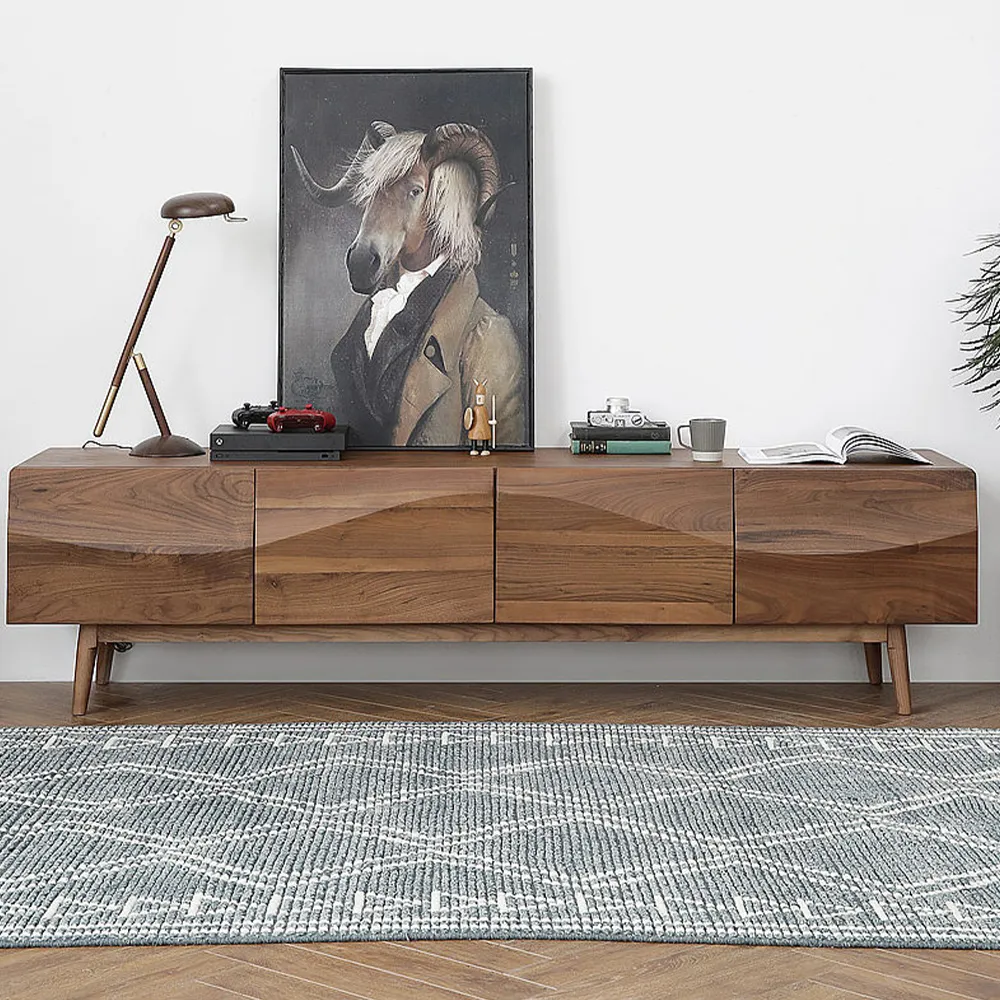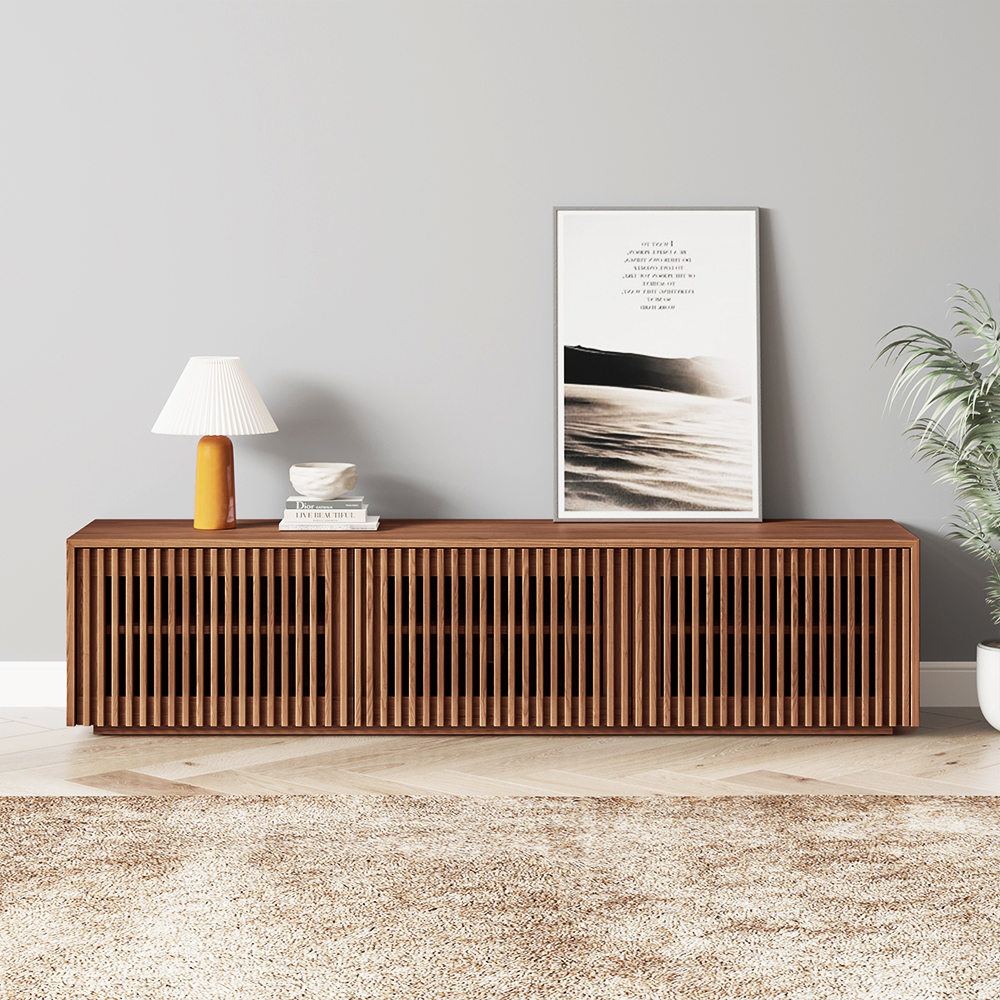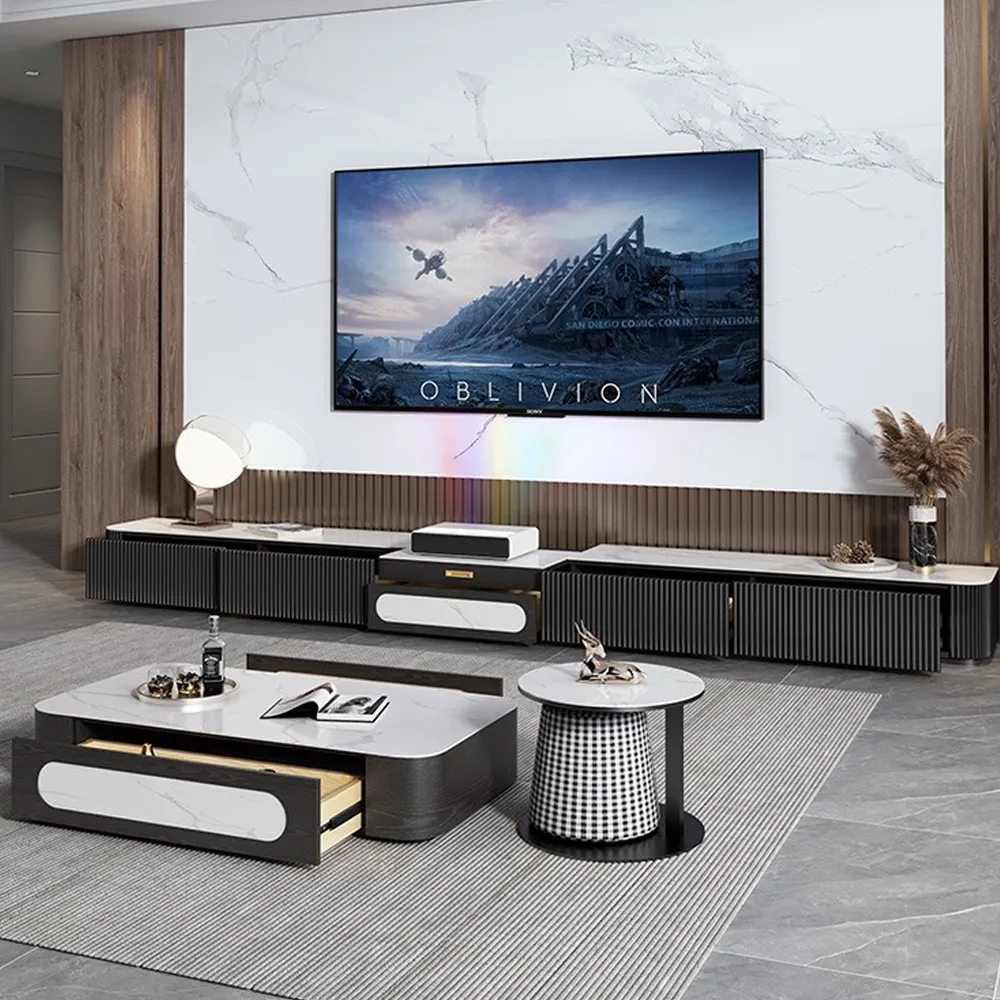The material plays a crucial role in determining to buy a TV stand furniture, not only the aesthetic appeal but also the durability and functionality of the furniture. Various materials are used to construct TV stands, emach with its unique characteristics. Here’s an exploration of the ways to clean TV stands with different materials and help you make an informed decision for your entertainment setup.
Contents:
How to Clean the Common Types of TV Stand Materials
Ways to Maintain Your TV Stands Regularly?
People Also Read:
How to Clean the Common Types of TV Stand Materials
1. Wood
Wood is a classic and versatile material widely used in crafting TV stands. It adds warmth and a timeless appeal to any room. Common wood types include oak, pine, walnut, and mahogany. Each wood variety comes with its own distinct grain patterns and colors, allowing you to choose a TV stand that complements your existing furniture.
Wooden TV stands are known for their sturdiness and durability. They can withstand the test of time, making them an excellent choice for long-term use. To maintain the beauty of a wooden TV stand, regularly dust it with a soft cloth and avoid exposing it to direct sunlight, as prolonged exposure can cause fading.

2. Glass
Glass TV stands provide a modern and sleek look to any space. People often prefer them for smaller rooms because they generate an illusion of openness. Manufacturers typically temper the glass used in TV stands to enhance strength and safety. These stands often feature metal or wooden accents to add a touch of elegance.
To keep a glass TV stand looking pristine, use a mild glass cleaner to remove fingerprints and smudges. Avoid using abrasive materials that could scratch the surface. Additionally, be mindful of the weight capacity to prevent any accidents, as glass may be more susceptible to breakage under excessive loads.
3. Metal
Metal TV stands are a popular choice for those seeking a contemporary and industrial look. They are typically made from materials such as steel or aluminum, providing a sturdy and reliable support system for your television. Metal stands often incorporate open shelving, allowing for efficient cable management.
Maintaining a metal TV stand involves regular dusting and occasional polishing to prevent the accumulation of dirt and grime. Pay attention to any exposed screws or joints, tightening them as needed. In humid environments, be cautious of potential rust, and consider using rust-resistant coatings for prolonged durability.
4. Particle Board or MDF
Particle board or Medium Density Fiberboard (MDF) TV stands are budget-friendly options that mimic the appearance of solid wood. These materials are engineered wood products, making them more affordable than their solid wood counterparts. However, they may not be as durable over the long term.
To care for a particle board or MDF TV stand, avoid placing heavy objects on its surface to prevent sagging or warping. Wipe spills promptly to prevent water damage, and use coasters or felt pads to protect the surface from scratches caused by electronics or decorative items.

5. Sintered Stone
Sintered stone TV stands can add plenty of possibilities to your house, since its stone-like patterns with different colors can fit for most home styles. As a man-made material, it is created through a process called sintering, which involves subjecting natural minerals. Thus it is exceptionally durable, resistant to scratches, and impervious to stains.
It is easy to learn how to clean a TV stand made of sintered stone. You are able to remove the dust and clean up the stains with a soft damp cloth. Prepare a mild cleaning solution by mixing a few drops of a pH-neutral dish soap with warm water. Avoid using acidic or abrasive cleaners, as they can damage the sintered stone’s surface.

How to Maintain Your TV Stands?
Now that you’re familiar with the common types of TV stand materials, let’s delve into practical tips on how to maintain and prolong the life of your chosen TV stand.
- Regular Cleaning Routine
Regardless of the material, a regular cleaning routine is essential. Dust your TV stand with a soft, lint-free cloth to prevent the buildup of dirt and particles. For wood and glass, use appropriate cleaners that won’t damage the surface. Avoid using abrasive cleaners that can scratch or dull the finish.
- Cable Management
Keep your TV stand clutter-free by managing cables effectively. Use cable organizers or clips to secure and hide cables, preventing a tangled mess behind your entertainment center. This not only enhances the overall appearance but also makes it easier to clean the area around the stand.
- Avoid Exposure to Direct Sunlight
Direct sunlight can cause fading and damage to certain materials, especially wood. Position your TV stand away from direct sunlight to preserve its original color and finish. If relocation is not possible, consider using curtains or blinds to diffuse sunlight and protect your furniture.
- Weight Distribution
Be mindful of the weight distribution on your TV stand, especially if you have heavy audio-visual equipment. Ensure that the stand’s weight capacity is not exceeded to prevent structural damage or accidents. For glass stands, place heavier items on lower shelves for added stability.
- Temperature and Humidity Control
Wooden furniture is sensitive to changes in temperature and humidity. Maintain a consistent indoor environment to prevent wood from expanding or contracting, which can lead to cracking or warping. Use a dehumidifier in damp conditions to safeguard against mold and mildew growth.
- Handle with Care
When moving or repositioning your TV stand, lift it instead of dragging it across the floor. This prevents scratches and damage to both the stand and your flooring. For glass stands, place felt pads under metal or abrasive items to avoid scratching the glass surface.